The Japanese anime Wolf Children is an inspiring and engaging film for miniature nature lovers. I have recommended this film to people completely forgetting that it is basically a very sad story though, so consider yourself warned!
I wonder if the author of Wolf Children was inspired by the story of Amala and Kamala, two “feral girls” from Bengal who are alleged to have been raised by wolves.
Transgression
By Western standards, this film feels transgressive in parts. For example, the bedroom scene between a human and a dog (kissing). It’s one thing to read in a novel about a young woman in love with a werewolf type creature, but I note with interest that Bella Swan never once kisses Jacob while he’s in his wolf form, at least not in the film adaptations. Imagine interspecies romantic scenes getting through in Hollywood.
Likewise, there is a conspicuous absence of nipples and breastfeeding in Western children’s stories. Why on earth don’t we see nipples in every single picture book about getting a new little baby brother or sister? If you want to normalise breastfeeding for your kids and expose them to cartoon nipples that are also not pornographic, to Japan you must go.
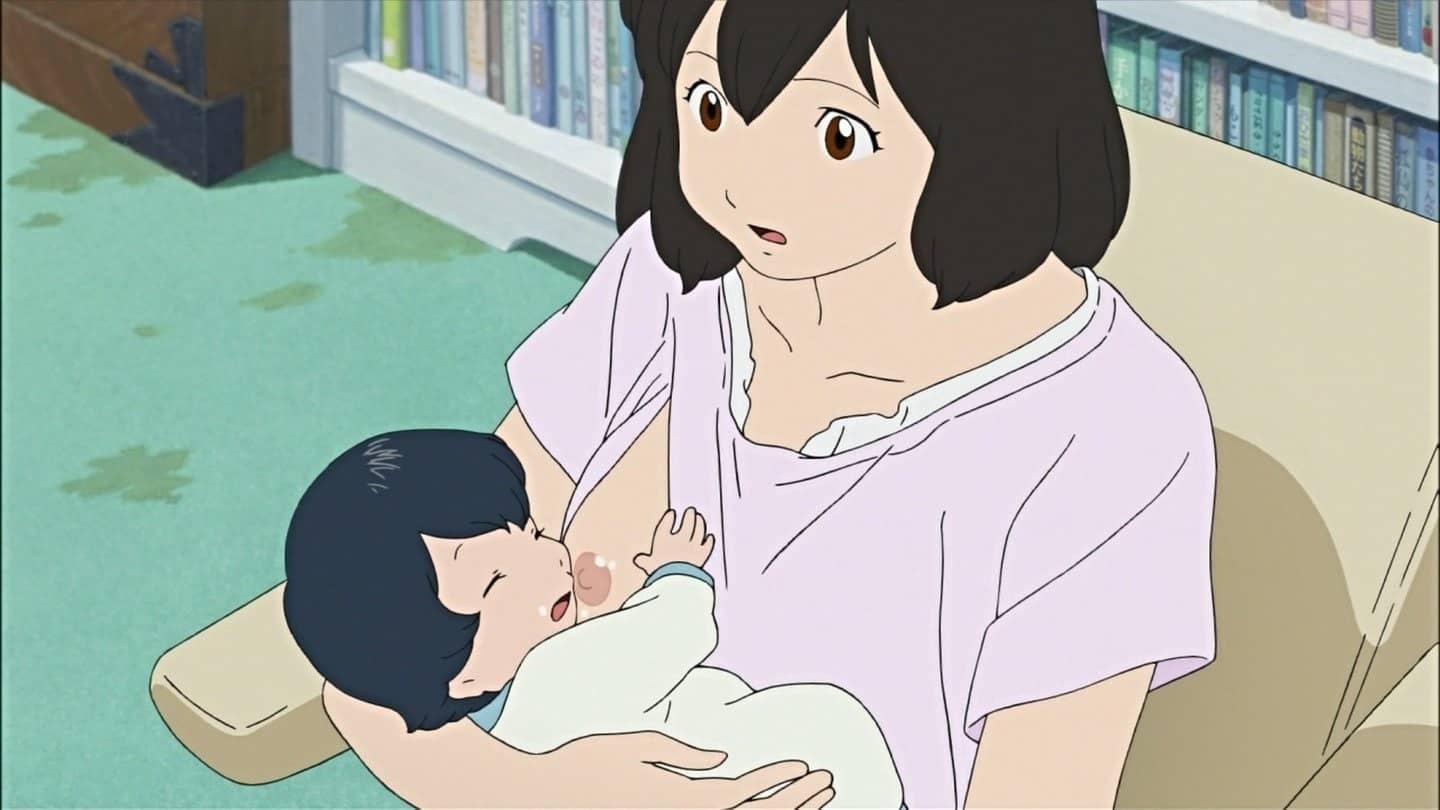
Storyteller As Narrator
The film is narrated by a nostalgic ‘character as storyteller‘.
The vast majority of stories make use of an unseen, omniscient narrator, but Yuki makes a good storyteller since she likes school (presumably making her good at words) and lives in the human world as an adult.
Wolf Children As An Allegory For Autism?
The director made this film to explore parenthood, and motherhood in particular. But this story is interesting to consider as a possible metaphor for having an invisible neurological difference such as autism. I can’t find anyone else who has come up with the same conjecture in English, but I did find someone in Japanese.
- Starting with the hopes and dreams of any parent, before realising you have a little person who is different.
- What if the baby is like me?
- Reading all you can about the condition
- Having to give up your part-time job and study, having no time to take care of yourself.
- Having neighbours judge your children without understanding the reasons behind it
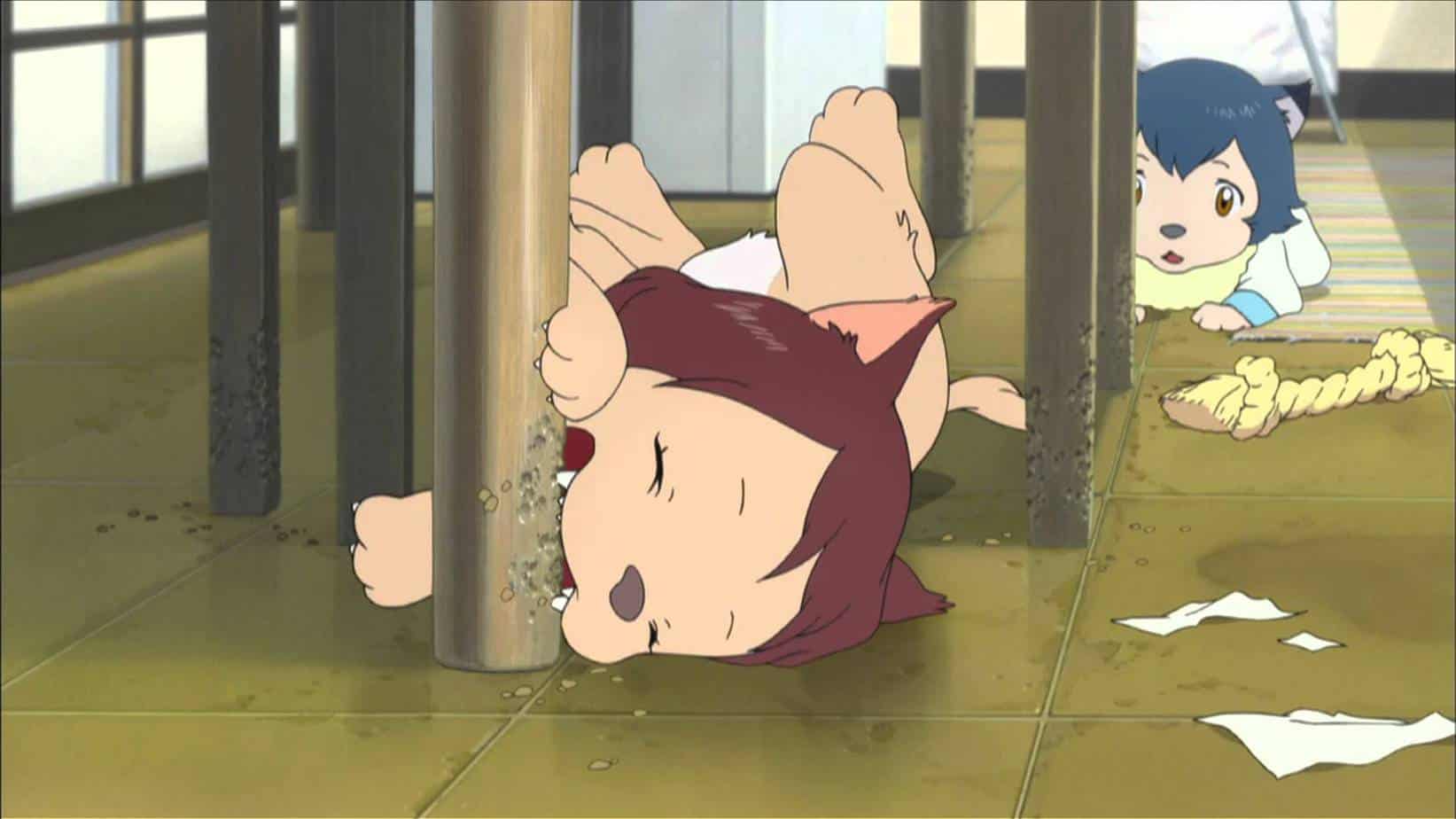
- Wanting to shield your children from the outside, judgmental world.
- Navigating the medical system: “Should I take her to a paediatrician or a vet?” (“To a paediatrician or a psychologist?”)
- Watching a group of other mothers laughing in the park, hiding behind a tree, thinking what it must be like to be ‘normal’.
- Having weird interests and collections. (Nightmare fetishist)
- “That brat of yours needs a muzzle.”
- Being keenly aware of negative depictions of your children in children’s books so steering your children away from them, curating to the point where you even feel like you need to write your own.
- Deciding who to disclose and not disclose to.
- Having your child notice: “Everybody’s always mean to [wolves]. Because of that I don’t want to be a [wolf].” (I just want to be normal.)
- Seeing your daughter struggle with the complex social world of girls: “I didn’t know how girls were supposed to act. All I knew is I was doing it all wrong.”
- The transmogrification into a wolf body as a metaphor for meltdowns
- Ame is bullied at school. (Loners are freaks.)
- The feeling that you don’t fit in anywhere
- Feeling more attracted to the animal/natural world than to the human one, which seems impossible to navigate without the neurotypical levels of intuition
- Letting go of your children to make their own decisions even though you feel they’re still too naive to navigate the world. (Though they’re adults in terms of years they may be younger psychologically, which is hard for a parent to deal with.)
- The city is a metaphor for isolation. So is the country, but by surrounding ourselves with just a few people who are genuinely caring it’s no longer isolating at all.
Wolf Children, being a classic coming-of-age story, is also an allegory for growing up in general, and making the decision to be one thing or another, all the while realising that if you choose one path, the other is closing over.
Chimera
Like a lot of anime, including many of the popular Hayao Miyazaki, this one is about transmogrification. The European tradition won’t find this particular transformation foreign: It’s basically a werewolf tale.
Plot Structure Of Wolf Children
Note on the plot structure: In the city Hana is isolated. The opponent/ally character web is set up only after she moves to the country. (Later than in most movies.)
Though the director says the story is about all three in this family, the main character is Hana. The focus is on her internal growth between the ages of 19 and 32, particularly her growth into motherhood. In order to work out which character is the main one, ask which changes the most, psychologically, not in circumstance. The mother goes from loner to living as part of a community, whereas the children simply grow up and become who they really are, so I make an argument for Hana as main character.
This is unusual in a story which is essentially for children/young adults.
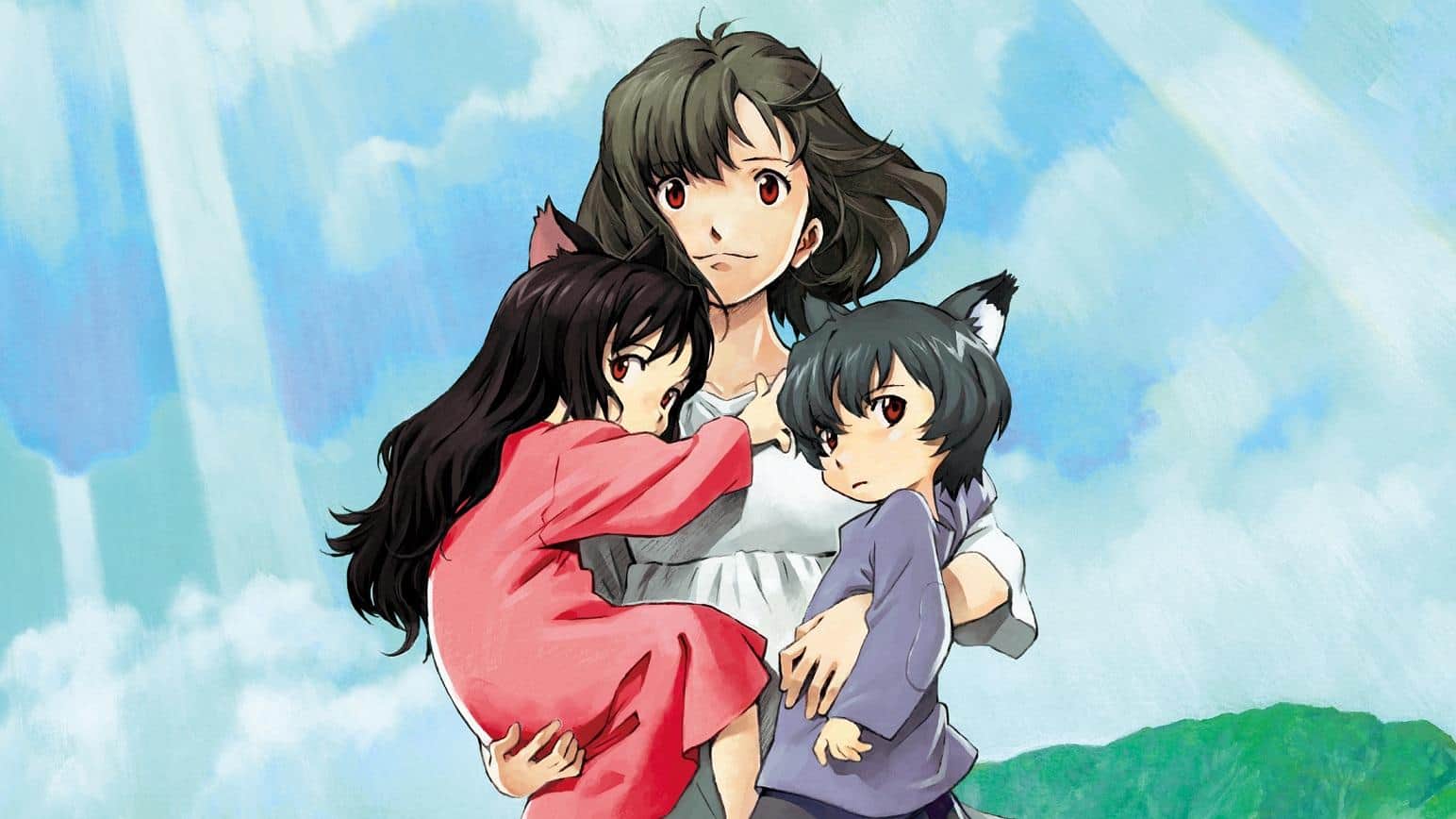
Anagnorisis, need, desire
Hana needs to learn how to deal with isolation.
She also needs to learn how to live in nature rather than learning entirely from books, which is what served her in the city. Hana is a bookish City Mouse.
Hana’s Name
花
Written as ‘flower’ in Japanese, Hana is basically learning to get in touch with nature, and since flowers are a part of nature, her name suggests that this aspect is an inherent aspect of her true self.
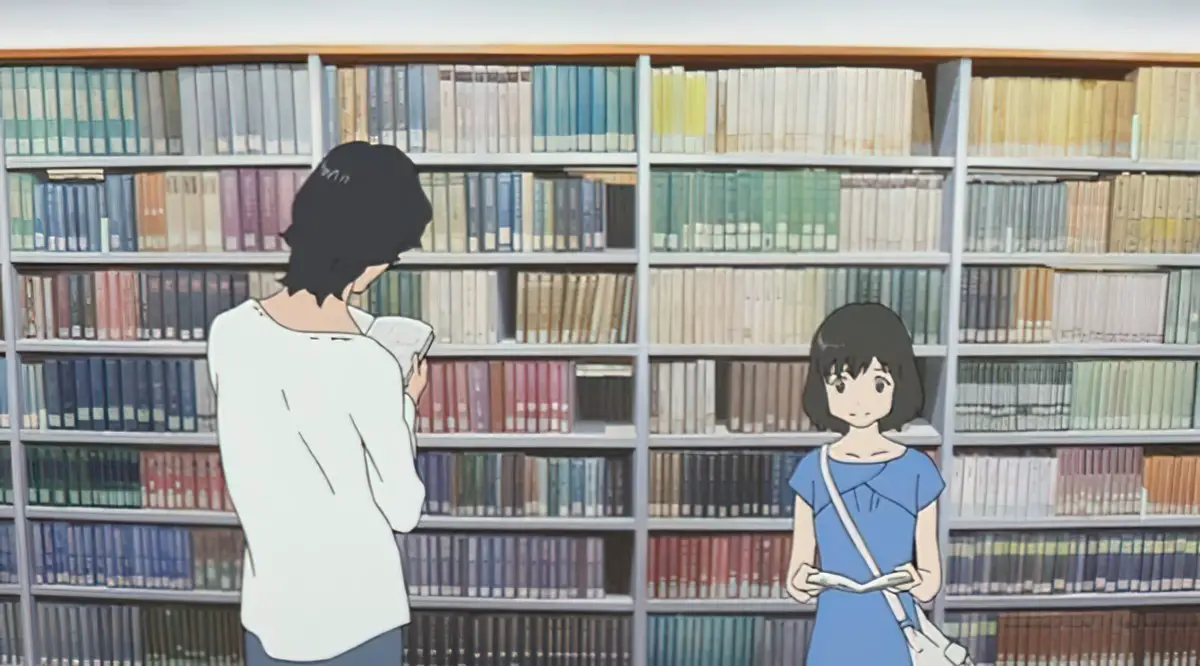
A ‘city mouse’ in a story is most often female. This is a version of the Fish Out Of Water Story. Generally, the advice to writers is:
[I]f establishing a pre-existing norm isn’t absolutely vital, skip it. Leave it out altogether, if you possibly can. Instead, start in médias res. In general practice, that means starting your actual narrative just before, or even during, the first major conflict or confrontation: the point at which things start to get serious, when they start moving toward final crisis.
Specifically, that means starting a short story just before the main crisis which will provide the story’s resolution. Start a novel during the first crisis, because you’ll have time to draw back and explain how things got that way later in the first chapter, or even in chapter two.
Don’t tell how the protagonist decided to go out and buy fireworks, how much they cost, how he brought them home, how he stored them, what his wife said. Begin when the fuse is lit and the reader sees a bang coming any minute.
Ansen Dibell
But certain genres demand the establishment of a norm, e.g. The fish out of water story. (A fish has to be ‘in water’ before s/he can be out of it.)
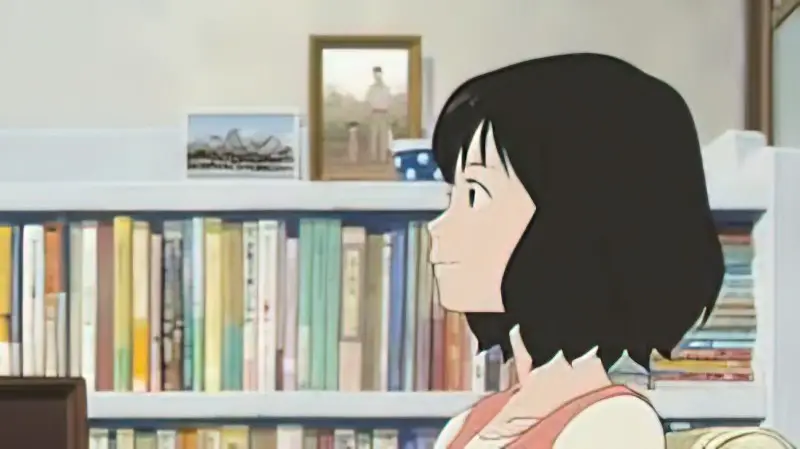
Hana’s apartment is full of books.
Ghost (a.k.a. backstory)
Hana’s father is dead (as can be seen in the photo on the book shelf) and her mother isn’t mentioned — Hana is a slightly exaggerated version of an isolated person.
Setting
The Contrast Between Urban and Rural
The choice of story arenas here are linked closely to Hana’s psychological development. Ironically, when surrounded by people, Hana is completely alone. It is only by paring down the noise of crowds that she is able to ‘find her people’.
Initial Setting: Tokyo, 1980s or 1990s

Compared to other, Western fish-out-of-water stories such as Crocodile Dundee, Big and 40-year-old Virgin, Wolf Children affords Hana a significant amount of time in the city. This is not a true fish-out-of-water story — this is the story of a city girl who learns to live in the country — a backwards version, perhaps. A better fit is perhaps the trope of the Naive Newcomer. This type of story is popular in the speculative fiction genres. When Hana gets in touch with nature, the audience goes along with her since we, too, are new to the country village and would have no idea how to survive there alone.
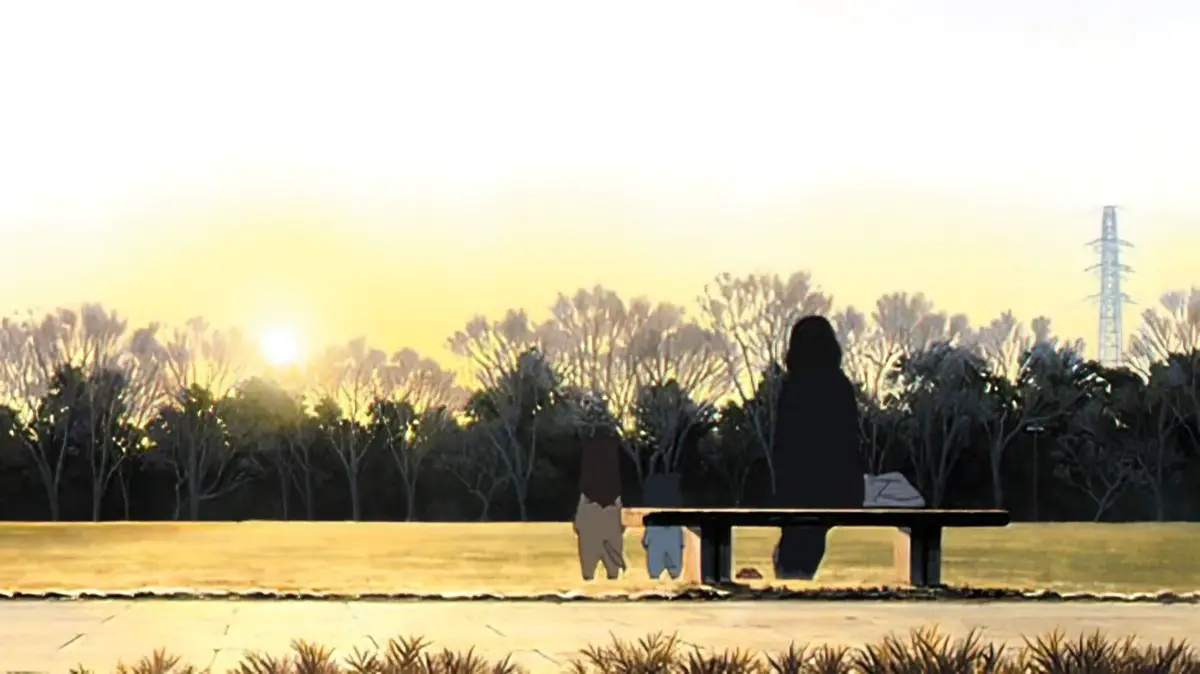
The city — as evidenced by all the time Hana spends around books — is a place of book learning.
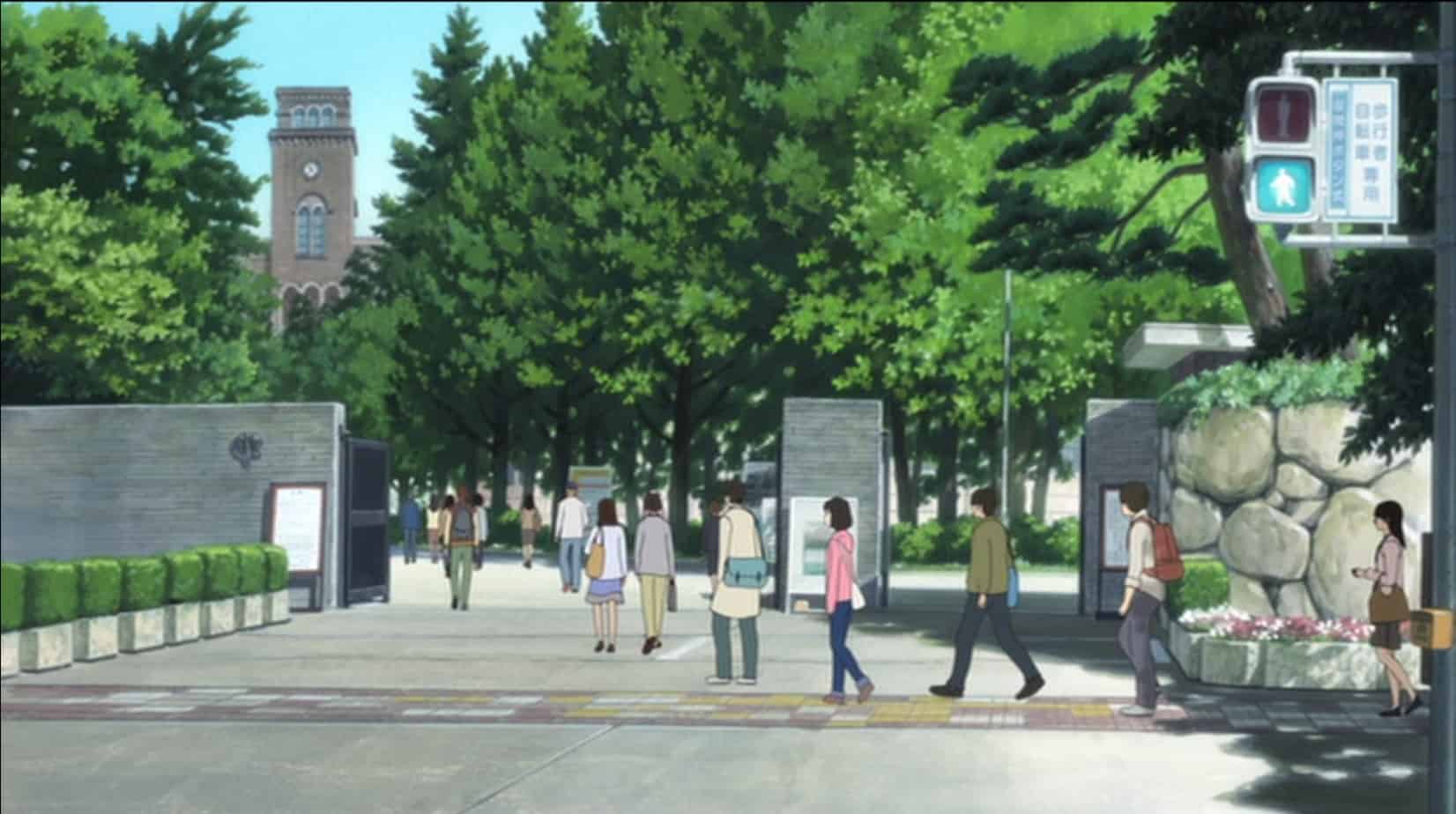
The university where Hana and Wolf man meet is modelled on Hitotsubashi University. This is an arts university, so naturally the students of a slightly earlier era are spending a lot of time around books.
The university is in this part of Tokyo:
A lot of the scenes in the animation can be seen in and around the area of Hitotsubashi University. This coffee shop actually exists:
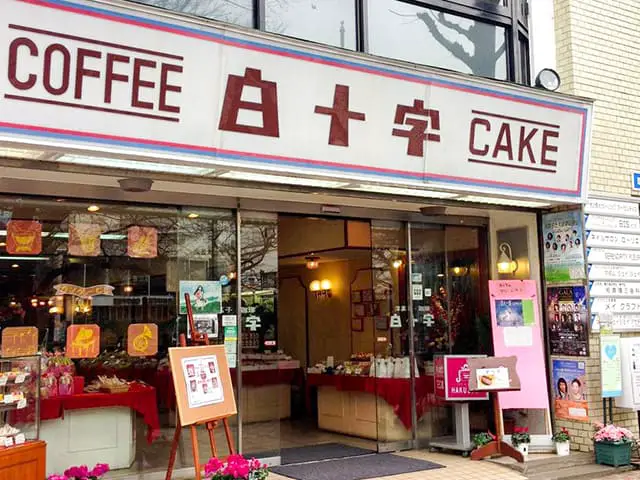
This dry-cleaning store also exists:
City Apartment
Hana’s apartment is just big enough for one to comfortably live. At one point Hana and Wolf Man are shown dipping their kebabs into the same glass of sauce.
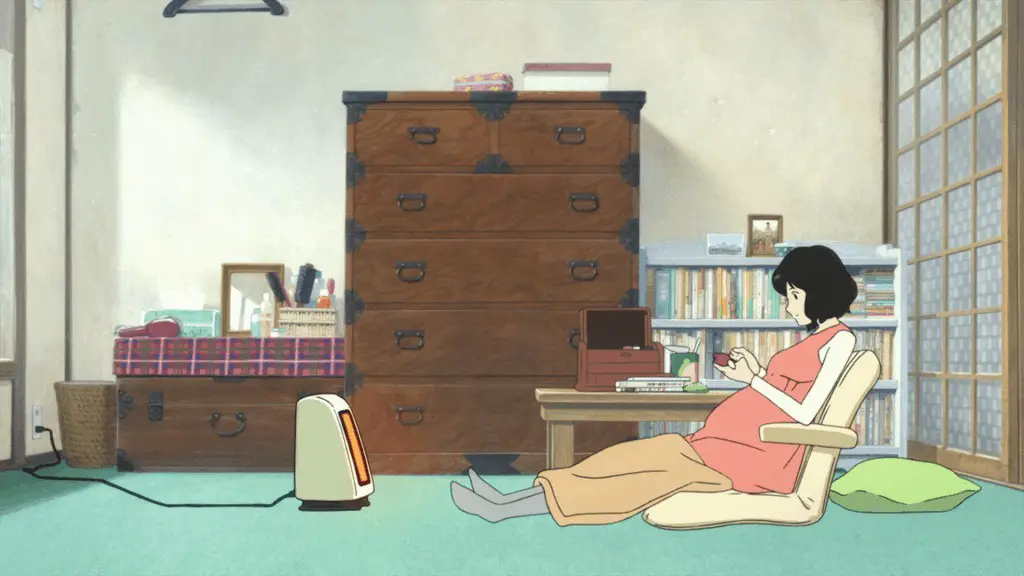
But even in the cozy apartment, there is danger for baby wolves.
The apartment is a haven but turns into a prison.
Symbolism of the Bridge
Wolf Man’s initial revelation (that he is a wolf) almost happens on the bridge – but he’s standing too far away from Hana and is unable to tell her in words. The location of the bridge is obviously symbolic: ‘a bridging of two species/minds’
He later dies in the canal below the very same bridge, and because we accept that this bridge is near their apartment, we don’t mind the heavy coincidence.
Seasons
The seasons are super important to Japanese culture and this film includes shots that linger on scenery to show the changing of seasons and therefore the passing of time.
This rural homestead is also based on a real house. (It’s in Kamiichi, Toyama.)
Subsequent Setting: The Rural Village In The Mountains
Hana takes her children to an old-style Japanese homestead, a la My Neighbour Totoro, Summer Wars and various other Japanese feature-length anime, in which this way of living induces a feeling of nostalgia in a Japanese audience, and also exists for symbolic contrast against the cramped and crowded but convenient life of most Japanese people today. This traditional Japanese sink seems to have particularly evocative associations for a Japanese audience. The same kind of sink can be seen in the old house of My Neighbour Totoro:
This type of beautiful setting is so often used in Studio Ghibli films that it is referred to as Ghibli Hills.
In most anime, especially with ones trying to deliver a message, this speaks to the nostalgia of many older directors for the traditional Japanese countryside that largely no longer exists because of urbanization. One historical western equivalent is Merry England for historical settings. Other times the pristineness is explained by alternate history, particularly the avoidance of major conflict or wars which lets people concentrate on improving themselves.
The house is very cheap to rent but the surrounding area is ‘not viable as farmland’ because “animals come down and eat all the crops and have pushed humans out. In most places it’s the other way around.”
Shortcoming & Need (Problem)
Psychological Shortcoming: Hana is lonely. In my adult, slightly world-weary view of this relationship, Hana puts up with Wolf man’s shit, smiling stupidly when he turns up late, chasing after him even though he brushes her off rudely. Though it’s now an overused phrase, she really is a bit of a pixie dream girl (without the mania, so much). But this is not the intended reading, I’m sure. Hana is the perfect Japanese girlfriend. She turns into an apron-wearing housewifely figure even before she’s pregnant. (Hey, maybe she shouldn’t have worn that apron…)
Hana’s shortcoming is that she isn’t in touch with her wild side.
She needs to find her place in the world where she can thrive.
Inciting Incident
Hana notices a good-looking young man in her lecture. She’s instantly fascinated by him.
Wolf Man is gruff and his body language suggests he doesn’t want to be bothered. This is the All Girls Want Bad Boys trope in action.
Mystery
Why does this guy come to lectures as an auditor student without bothering to fill out an attendance card?
Desire
To get to know the mysterious good-looking guy in her lectures who never comes with the right gear but who appears to be bookish.
Wolf man is a similar character is Jess in Gilmore girls. (Troubled but cute.)
Ally/Allies
Wolf Man is duplicitous by his supernature, so is Hana’s ally (as a loyal provider and boyfriend) as well as her opponent (by turning into a wolf occasionally and being reckless.)
Once the setting switches to the country, the character web widens to include more complex relationships:
Fake opponent: The grumpy old man who is horribly judgemental about the vegetable growing but ends up helping with his advice. (Jerk with a heart of gold.)
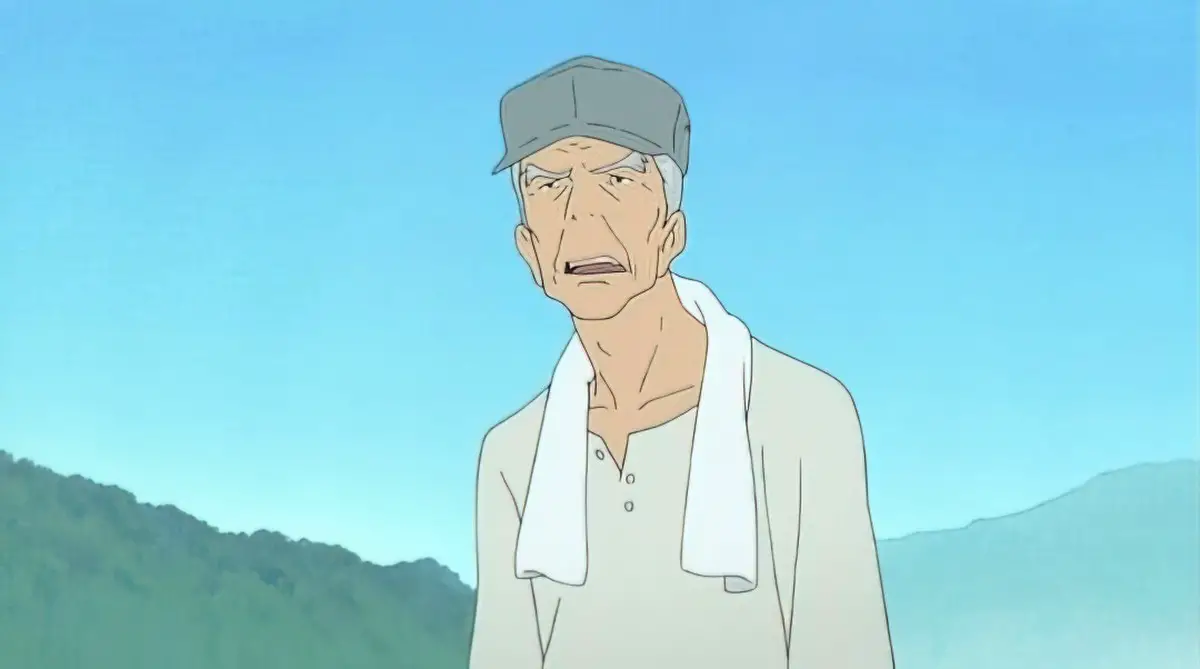
Opponent
In the country, the generic middle-aged neighbour is Hana’s friend but because she’s a regular woman and Hana doesn’t trust her, she is also someone Hana needs to hide her children from. This woman stands for a lot of the people Hana would meet in that environment — very friendly but possibly too sheltered to welcome diversity into the area.
Fake-ally opponent
In a minor way: the two old men who do try to help Hana end up bickering among themselves and offer conflicting advice which is no real use to Hana at all. They stand in contrast to the contrasty old man who is nevertheless useful: “Not all useful advice comes coated in sugar.” (That’s not an actual idiom, but I’m sure there’d be something similar in the history of East Asian thought.)
Attack by ally
Constant jibes from the old man about Hana’s lack of gardening ability.
Changed desire and motive
Hana just wanted to study before but now she wants to know who this fascinating man is.
First revelation and decision
“Hana. Look at me. Tell me what you see.” Fascinating guy turns into a wolf.
Plan
To live as a human couple in the city. Wolf Man will buckle down as a human and get a job as a delivery truck driver. Hana will wear an apron and prepare meals.
Opponent’s plan and main counterattack
Presumably due to Wolf man’s irrepressible wild side, she becomes pregnant.
Drive
Now they will bring up a child while hunkering down. Their plan to couple and nest is basically solidified by the news of pregnancy.
Apparent defeat
Wolf man dies in the canal. How can Hana live as a single parent in an expensive city, with two wolf children? All he had in his wallet was 2000 yen (about 30 dollars.) He’s actually left a bit more than that, but we get the idea it’s not much.
Obsessive drive, changed drive, and motive
Hana will stay in the apartment but live a secret live, concealing her children’s true identity from everyone.
Second revelation and decision
When neighbours send the child protection authorities to the house Hana realizes Tokyo is no place for wolf children. So she decides to move to the country, despite having no money and no job prospects there. Hana wants her children to have the choice between being children and being wolves.
Third revelation and decision
Rather than learning all about gardening and wolves from books, Hana decides to ditch the books. She diligently and humbly takes advice from the crotchety old man neighbour. When Yuki is upset that all the wolves in books are baddies and end up dead, she further shies away from book knowledge. From now on she’ll learn from the natural world itself. (A common response to adversity in Japanese stories is that in order to grow and get out of trouble, the character just has to be humble and work hard. Spirited Away is another example well known in the West.)
Audience revelation
Much later, the audience realizes when Souhei and Yuki are stuck at school debating how they’re going to survive if nobody ever comes to pick them up that this is a replay of Hana and Wolf Man when they were living in Tokyo, trying to work out how to survive alone. Someone comes to check the building is empty: “Hey, what were we hiding for?”
Gate, gauntlet, visit to death
The first visit to death is symbolised by the play in the snow in which they all end up as snow angels, looking up at the sky. After this, Ame is catching a bird and almost drowns in the freezing cold river. This creates a juxtaposition between extreme joy and extreme fear.
Battle
There are three big struggle scenes in this epic. The big struggle between brother and sister is foreshadowed by the big struggle at school in which Yuki bites the new boy’s ear. Next we have man against nature, which is what all the big struggles have been about all along.
Some years later, as adolescent hormones course through her body, Yuki loses her temper at school and bites a new boy. He’s not being mean when he asks if she has a dog at home but she perceives it as being mean, since he says she smells like one.
Next is a literal fight scene, rolling around on the floor, noisy big struggle between brother and sister after they make different decisions about going to school (and not). This is an outworking of the psychological turmoil each is having on the inside.
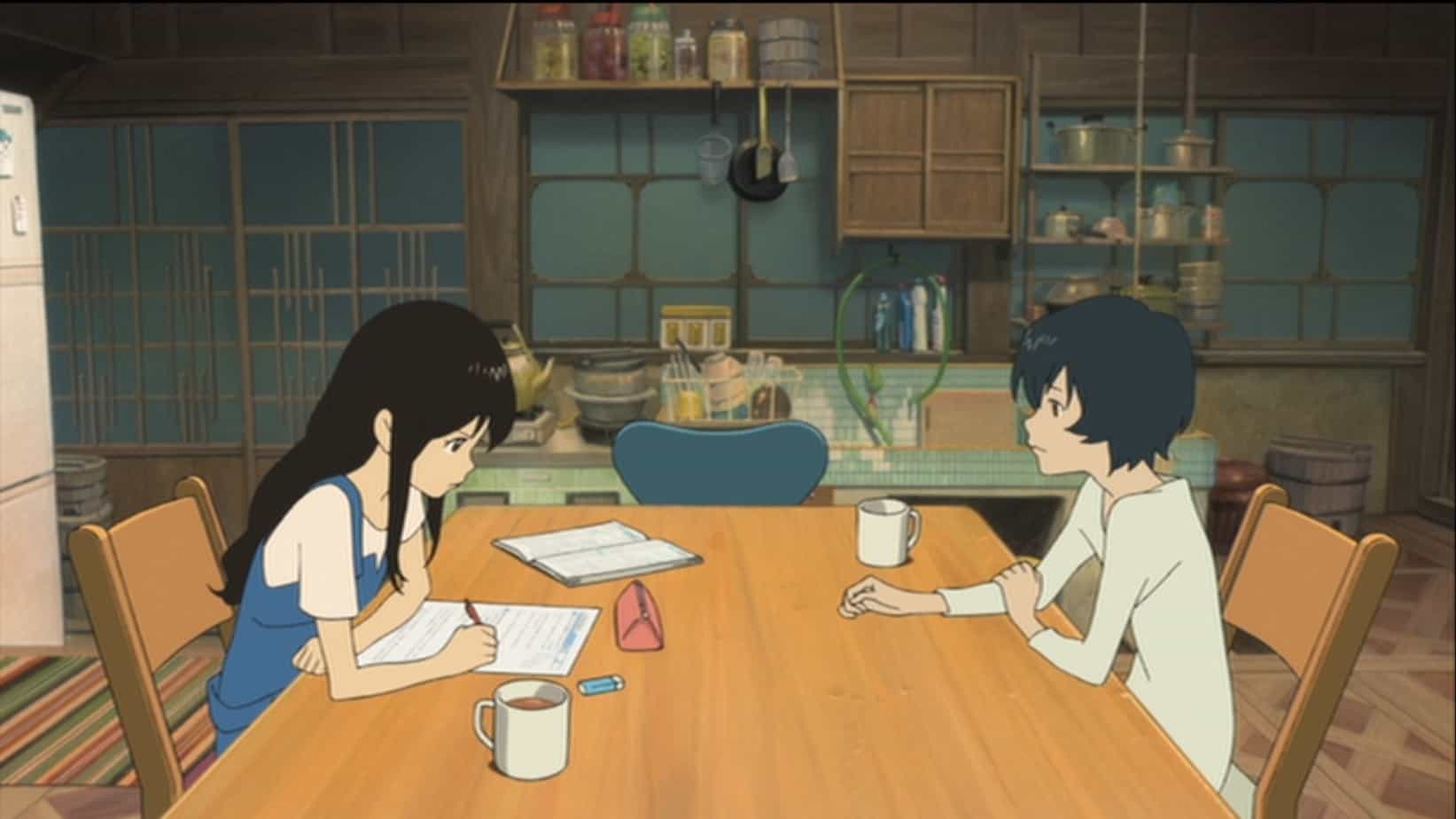
The third big struggle is the one between Ame and nature. The rain storm that closes the school. Ame takes off into the mountains to look after his secret animal business. Meanwhile, Yuki waits in school for her mother to pick her up, while Hana’s off looking for her son. She comes face to face with a bear and is terrified. (The Bears Are Bad News trope.) But then two bear cubs turn up and she sees the ‘humanity’ in the fearsome wild animals. She falls down a cut bank and is knocked out briefly.
Anagnorisis
I figured out why you made me plant so much. We’re all in that together.
She tells her dead wolf husband that she was wrong about moving to the whop whops because it’s isolated – in the rural area she is surrounded by more people. But it was a good decision.
There is another talk to the drivers’ licence altar when she realises her children are starting to make their own decisions.
Moral decision
After meeting the fox sensei Hana decides to let her own children make their decisions about whether they’ll live the rest of their lives as human or as wolves.
New situation
Yuki takes the human course, though she’s not happy about it and wishes her brother would do the same. But the more introverted Ame has met a fox who he uses as his animal mentor and has fallen in love with the beautiful scenery of the mountains, so decides to live out the rest of his life as a wolf. He answers a ‘call of the wild’ to be the guardian of the mountains. (A classic call-to-adventure, which we don’t actually see all that much of in modern stories — usually, shit happens, characters respond reluctantly and end up growing psychologically.)
SEE ALSO
RED BUFFALO WOMAN
“Red Buffalo Woman” is a traditional West African folk tale. Oya is a shape-shifting deity who must make a difficult choice between family and her secret life as a wild animal.
If you’d like to hear “Red Buffalo Woman” read aloud, I recommend the retellings by Parcast’s Tales podcast series. (They have now moved over to Spotify.) These are ancient tales retold using contemporary English, complete with music and Foley effects. Some of these old tales are pretty hard to read, but the Tales podcast presents them in an easily digestible way. “Red Buffalo Woman” was published September 2021.
